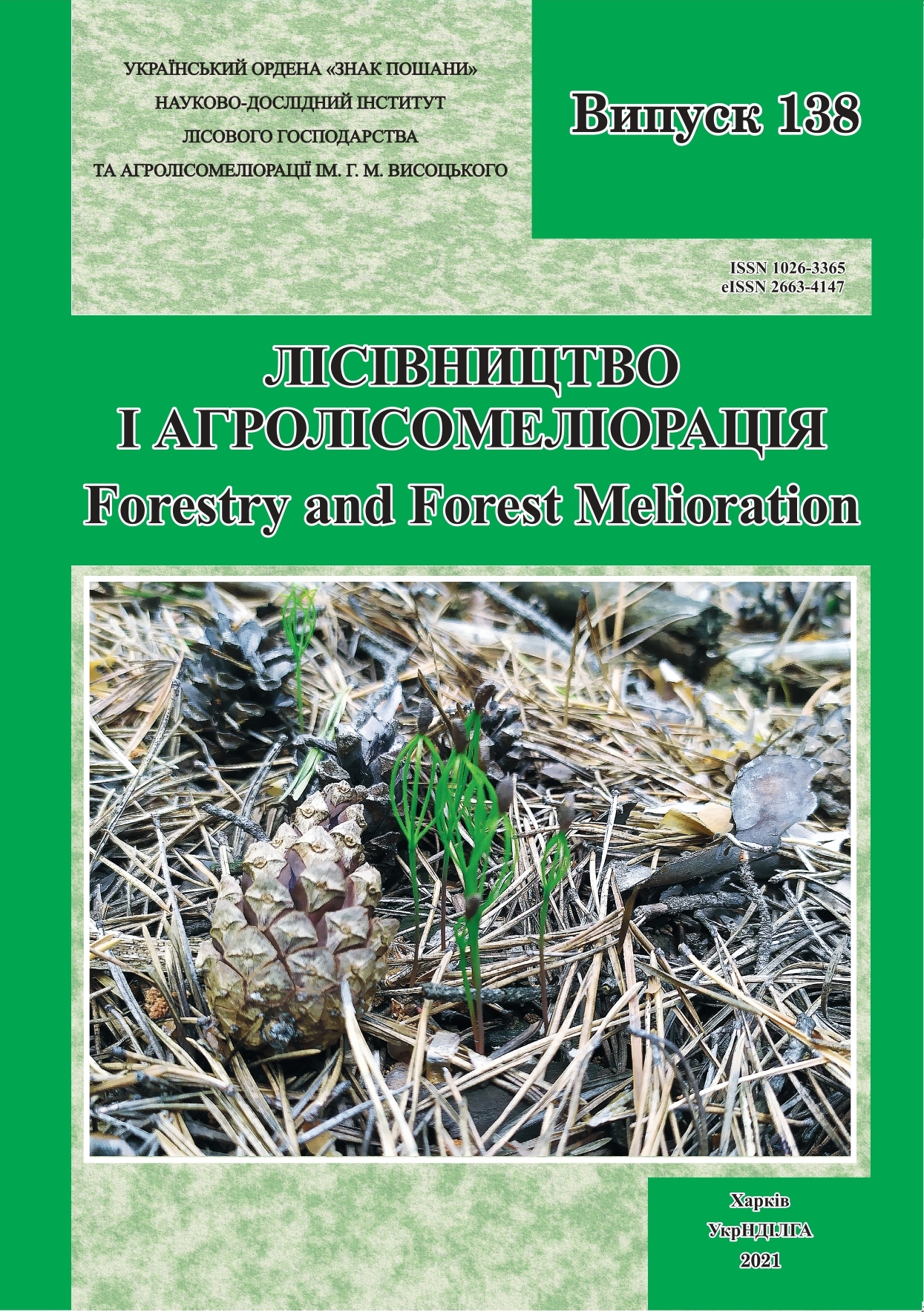Анотація
Thanasimus formicarius (Linnaeus 1758) (Coleoptera: Cleridae) – хижак багатьох видів твердокрилих. У 2018 р. розпочалося вирощування цього хижака у Державному cпеціалізованому лісозахисному підприємстві «Харківлісозахист». Метою цього дослідження було оцінювання перших результатів випуску Th. formicarius в осередки короїдів. У досліді випробовано такі варіанти: 5 варіантів із застосуванням мінеральних добрив і хижака, один варіант із випуском хижака без внесення добрив, один варіант із внесенням добрив без випуску хижака і один варіант без внесення добрив і хижака. Найшвидше згасання спалаху розмноження короїда у порівнянні з контролем відбулося на ділянках із випуском хижака. Випуск хижака разом із обробленням насаджень мінеральним добривом забезпечував більше покращення стану насаджень і зменшення життєздатності популяцій короїдів, ніж у варіанті лише випуску хижака.

Ця робота ліцензується відповідно до Creative Commons Attribution 4.0 International License.
